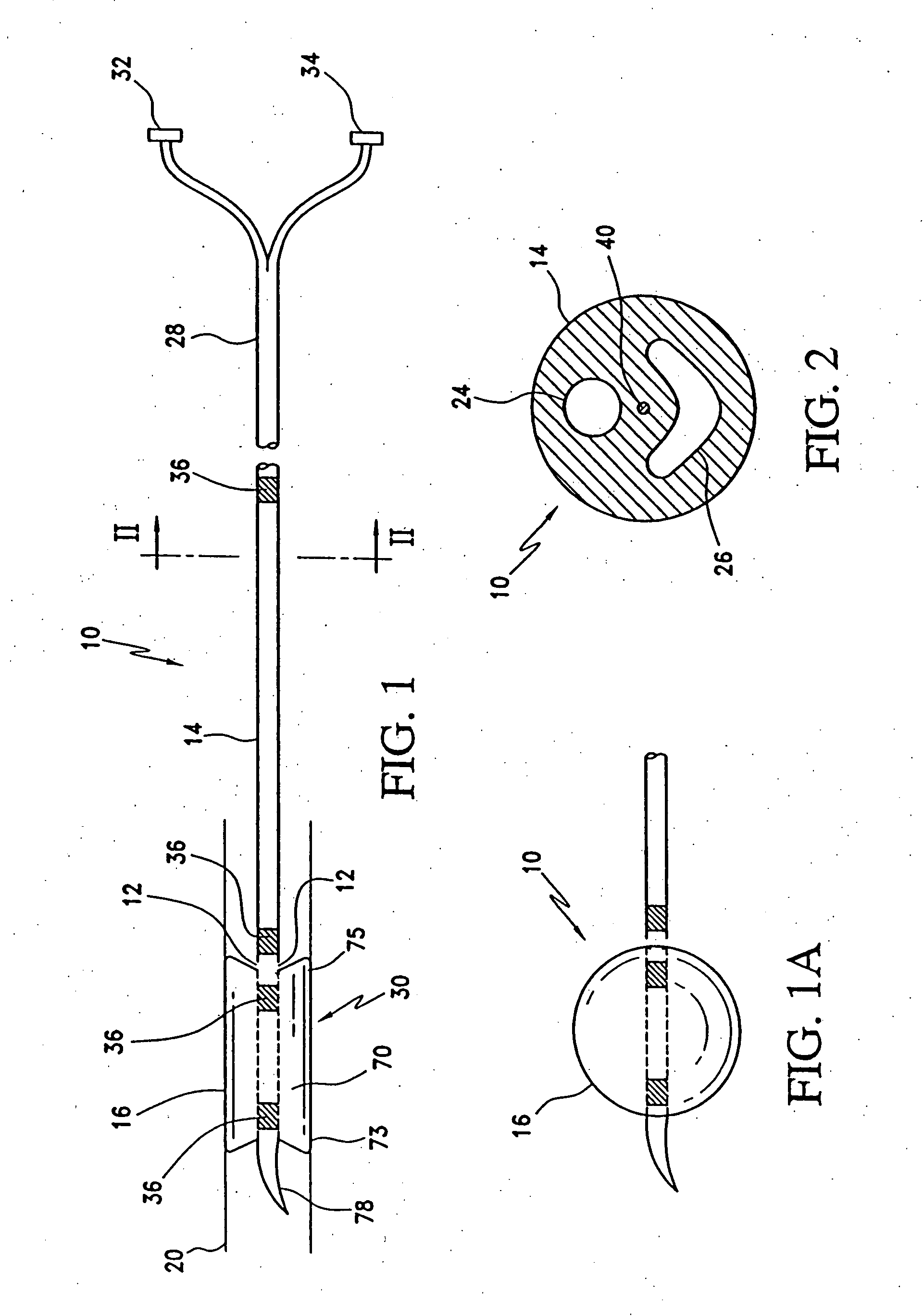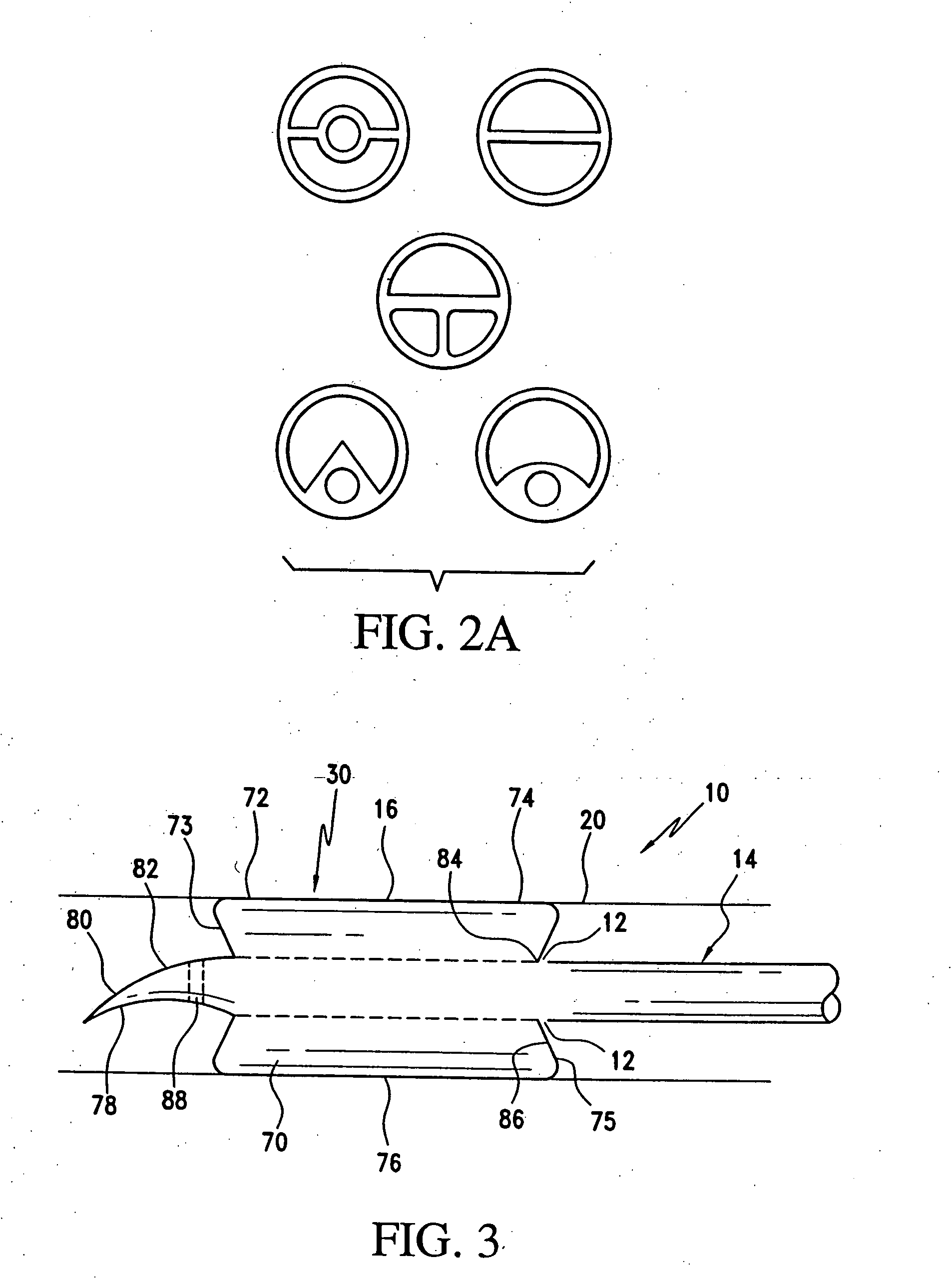Method and apparatus for treatment of thrombosed hemodialysis access grafts and arterio venous fistulas
a technology of hemodialysis access grafts and arteriovenous fistulas, applied in the field of interventional radiology, can solve the problems of clot formation, patients may even die, and only offering an average patency of ptfe graft access
- Summary
- Abstract
- Description
- Claims
- Application Information
AI Technical Summary
Benefits of technology
Problems solved by technology
Method used
Image
Examples
Embodiment Construction
[0055] The detailed embodiments of the present invention are disclosed herein. It should be understood, however, that the disclosed embodiments are merely exemplary of the invention, which may be embodied in various forms. Therefore, the details disclosed herein are not to be interpreted as limiting, but merely as the basis for the claims and as a basis for teaching one skilled in the art how to make and / or use the invention.
[0056] With reference to FIGS. 1, 2 and 3, a balloon catheter 10 with infusion apertures 12 positioned directly adjacent the proximal end 75 of the balloon 16 for the injection of thrombolytic agents, contrast materials and / or any other fluid such as saline or a combination of fluids is disclosed. The present balloon catheter 10 is preferably designed for use in dialysis access declotting, although those skilled in the art will appreciate that it may be used for a variety of applications, such as, dialysis fistula or a native artery or vein. In accordance with ...
PUM
 Login to View More
Login to View More Abstract
Description
Claims
Application Information
 Login to View More
Login to View More - R&D
- Intellectual Property
- Life Sciences
- Materials
- Tech Scout
- Unparalleled Data Quality
- Higher Quality Content
- 60% Fewer Hallucinations
Browse by: Latest US Patents, China's latest patents, Technical Efficacy Thesaurus, Application Domain, Technology Topic, Popular Technical Reports.
© 2025 PatSnap. All rights reserved.Legal|Privacy policy|Modern Slavery Act Transparency Statement|Sitemap|About US| Contact US: help@patsnap.com



